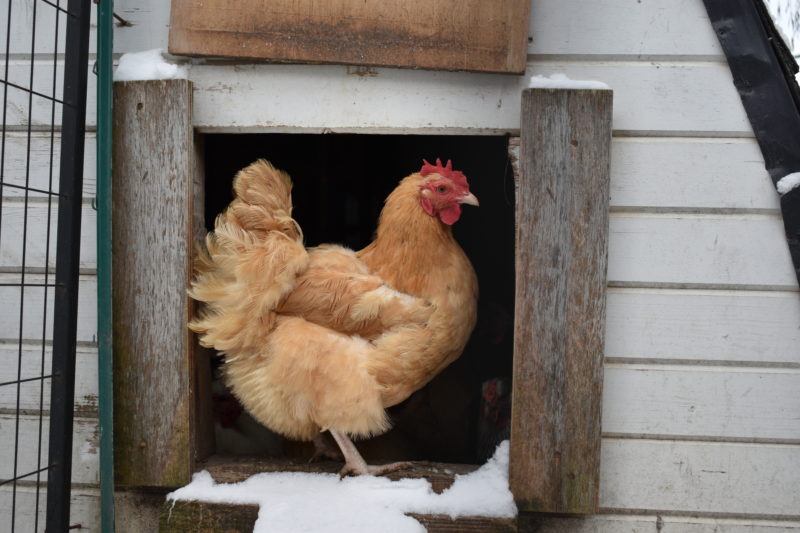When winter comes around, both new and experienced homesteaders wonder how they can keep their livestock and fowl warm. This issue is primarily a concern for those who have smaller animals, like chickens. There are several ways to protect these animals from the cold, but many owners ask if they should provide a direct heat source to their coops. It’s a heavily debated topic, and in most cases, it depends on your situation. Below is some information to help you figure out the best way to keep your chickens warm as temperatures drop.
First, the Facts
Like many creatures, chickens are born with the means to protect themselves from chilly conditions. Between their outer feathers and their skin is a gap that circulates warm air to keep them toasty. They also tend to huddle in groups, tuck their heads under their wings and produce body heat through digestion. These biological advantages allow them to stay protected from frostbite and other health conditions.
If you own hens that are native to your area, they’ll be even better off, as they’re already used to the local climate. Ultimately, chickens that endure the cold as they’re meant to will lead happier, healthier lives.
How to Safely Keep Chickens Warm
That said, it isn’t always enough for chickens to warm themselves naturally. You might be inclined to heat your coop with lamps or small space units, and while these methods are effective, they pose dangers like fires and burns. An option that’s gaining more popularity these days is geothermal energy, a sustainable and cost-effective alternative to traditional systems. You’ll want to avoid any heat source that relies on electricity, as a sudden drop in temperature can kill your birds.
The most important thing you can do for your chickens is to provide them with food and water. If their water source freezes, they’ll become deprived of essential nutrients, which will also prevent them from adequately regulating their body heat and producing eggs. If you can’t check on their food and water throughout the day, consider implementing a heated water base at their water source.
While you don’t need to fatten your hens up for the winter, it might be helpful to occasionally feed them chicken scratch before bedtime. Doing so will assist them further in producing body heat.
It’s best to make sure your coop is well insulated. Place fiberglass or foam inside the walls to prevent the cold from coming in. If you want to take a less intensive approach, you can line the walls with heavy blankets instead. At the same time, you should check that your coop is not drafty, but well-ventilated. Such ventilation prevents moisture from entering, which is vital for chickens in the colder seasons.
Not Too Little, Not Too Much
While chickens can usually handle themselves, there are measures to take to ensure they have access to ideal living conditions. Should an extreme shift in weather occur, or if you own older or injured birds, you’ll want to keep your coop safely heated. You don’t want to smother your hens with heat, but you shouldn’t deprive them either.

It all depends on the type of chickens you own and where you live, so don’t hesitate to research your specific situation. Every coop is different but will require a properly insulated structure as well as a consistent water and food source.
Source List:
gap that circulates warm air [https://www.fresheggsdaily.com/2016/12/how-do-chickens-stay-warm-in-winter.html]
sustainable and cost-effective alternative [https://iwae.com/resources/articles/geothermal-heating-facts.html]
which is vital for chickens [https://www.communitychickens.com/10-winter-chicken-care-mistakes-to-avoid/]
Kacey Mya is the blogger behind The Drifter Collective, an eclectic lifestyle blog that expresses various forms of style through the influence of culture and the world around us. Along with writing for her blog, she has written for sites like U.S. News, SUCCESS, Guides for Brides, Hotel Online and more!
Follow Kacey on Twitter and subscribe to her blog to keep up with her travels and inspiring posts!













1 Comment
How do you tell the hens from the roosters?